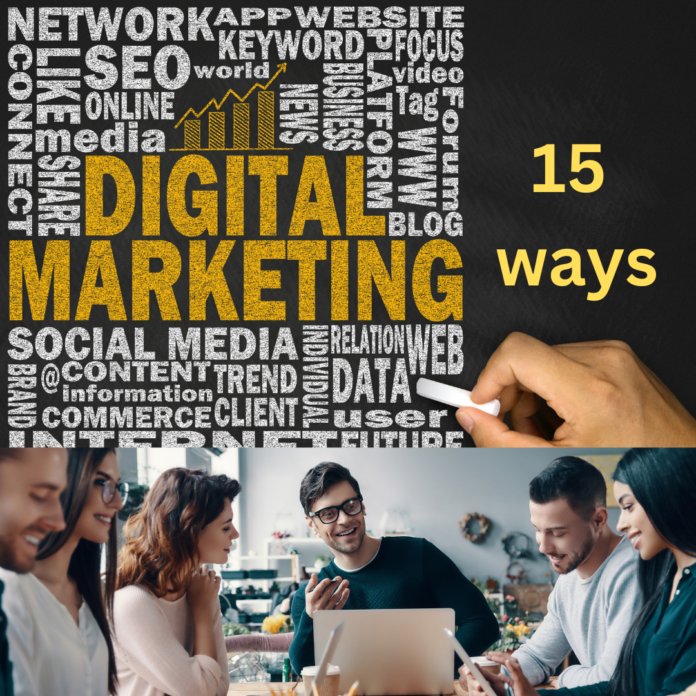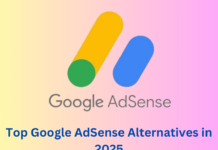In today’s rapidly evolving digital landscape, having a robust digital marketing strategy is essential for any business that wants to thrive online. Whether you’re a small startup or a large corporation, understanding the different facets of digital marketing can help you craft an approach that meets your specific needs and reaches your target audience effectively.
This guide will walk you through 15 major digital marketing strategies, providing you with actionable insights and a comprehensive overview of each.
Search Engine Optimization (SEO)
Search Engine Optimization (SEO) is the foundation of any successful digital marketing campaign. SEO is all about improving your website’s visibility on search engines like Google, Bing, and Yahoo by optimizing content, structure, and technical elements.
Key Elements of SEO:
On-page SEO: This includes optimizing content, headings, meta tags, and keywords on individual web pages.
Off-page SEO: Involves acquiring backlinks from authoritative websites, social signals, and other off-site strategies to improve search rankings.
Technical SEO: Focuses on the backend of your website, ensuring fast load times, mobile responsiveness, proper indexing, and security.
Local SEO: Optimizes your site for location-based searches, important for businesses that serve a particular geographical area.
By implementing a strong SEO strategy, your website can climb search engine rankings, drive organic traffic, and build credibility with your audience.
Content Marketing
Content marketing revolves around creating, publishing, and distributing valuable content to attract and engage a targeted audience. The aim is to build trust and foster a long-term relationship with potential customers by providing helpful, relevant, and consistent content.
Types of Content Marketing:
Blog posts: Writing informative articles that answer common questions or solve problems your audience faces.
eBooks & White Papers: In-depth content pieces that provide detailed information on specific topics.
Infographics: Visually appealing graphics that present complex information in an easy-to-understand format.
Webinars & Tutorials: Interactive sessions or videos where you provide detailed instructions or discussions on important topics in your industry.
A well-executed content marketing strategy can drive traffic, generate leads, and establish your brand as an authority in your field.
Social Media Marketing
Social media marketing leverages the power of platforms like Facebook, Instagram, LinkedIn, and Twitter to promote your brand and engage with your audience. It’s a powerful way to humanize your brand and build a community of loyal customers.
Best Practices:
Engagement: Actively respond to comments, likes, shares, and direct messages to foster a relationship with your audience.
Content Types: Share diverse types of content including images, videos, polls, and live streams to keep followers engaged.
Analytics: Track performance metrics to understand which posts and campaigns are most effective.
Social media platforms also offer targeted advertising options that allow you to reach specific demographics, making it easier to find potential customers.
Email Marketing
Email marketing remains one of the most effective and direct ways to communicate with your audience. It’s personal, measurable, and delivers a high return on investment.
Types of Email Campaigns:
Newsletters: Regular updates about your business, new content, or industry news.
Promotional Emails: Send discounts, deals, or announcements to encourage purchases.
Drip Campaigns: Automated emails that guide subscribers through the sales funnel.
To succeed in email marketing, focus on building a quality email list, personalizing your messages, and analyzing open/click-through rates to refine your strategy.
Pay-Per-Click (PPC) Advertising
PPC advertising allows you to buy visits to your website by paying each time someone clicks on your ad. It’s a fast way to drive traffic and generate leads but requires careful budget management and optimization.
Popular PPC Platforms:
Google Ads: Target users searching for specific keywords related to your business.
Facebook Ads: Reach users based on interests, behaviors, and demographics.
Instagram Ads: Leverage visually engaging ads targeted to a younger audience.
Effective PPC campaigns require keyword research, ad optimization, and continuous performance monitoring to ensure you get the best return on your investment.
Affiliate Marketing
Affiliate marketing allows businesses to partner with individuals or other companies to promote their products or services in exchange for a commission. This is a low-risk method of increasing sales and expanding your reach.
Key Components:
Affiliate Partners: Influencers, bloggers, or websites that promote your product to their audience
Commission Structure: Paying affiliates based on clicks, leads, or sales generated through their promotion.
Tracking: Using special links or codes to monitor affiliate performance.
Affiliate marketing works well when you have a product with mass appeal that partners are excited to promote.
Influencer Marketing
Influencer marketing involves collaborating with influential figures in your industry or niche to promote your product. These individuals have established trust with their audience, which can lend credibility to your brand.
How to Implement:
Micro vs. Macro Influencers: Choose between influencers with smaller, highly engaged followings or larger ones with broad reach.
Partnership Types: Collaborate on sponsored posts, product reviews, giveaways, or affiliate deals.
The success of influencer marketing lies in selecting the right influencers whose audience aligns with your target market and building long-term relationships.
Video Marketing
With the rise of platforms like YouTube, TikTok, and Instagram Reels, video marketing has become a dominant force in digital marketing. Videos are highly engaging and can quickly convey complex messages.
Types of Video Content:
Product Demos: Showcasing how your product works.
Customer Testimonials: Sharing real customer experiences to build trust.
Live Streams: Hosting Q&A sessions or behind-the-scenes events to engage with your audience in real-time.
To succeed, focus on producing high-quality videos that are optimized for mobile viewing and shareable across different platforms.
Mobile Marketing
Mobile marketing targets users on smartphones and tablets through SMS, apps, and mobile-friendly websites. With more than half of all internet traffic coming from mobile devices, it’s crucial to have a strategy that caters to this audience.
Key Tactics:
Responsive Web Design: Ensure your site works well on mobile devices.
Mobile Apps: Offering a dedicated app for a more personalized user experience.
SMS Marketing: Sending text message campaigns to keep customers updated.
Businesses that invest in mobile marketing can reach their audience anytime, anywhere, resulting in higher engagement and conversion rates.
Display Advertising
Display advertising involves placing banner ads on websites, apps, and social media platforms to increase brand visibility. These ads are typically visual, featuring images, videos, or graphics.
Types of Display Ads:
Banner Ads: Static or animated images displayed across websites.
Video Ads: Short clips placed before, during, or after video content.
Native Ads: Ads that blend seamlessly with the surrounding content.
Display advertising is effective for brand awareness, especially when targeted correctly using audience data.
Online PR
Online PR focuses on managing your brand’s reputation through online channels like blogs, social media, and news websites. It involves proactively sharing press releases, articles, and responding to negative comments or reviews.
Techniques:
Press Releases: Announce new products, partnerships, or other significant company news.
Media Outreach: Connect with journalists or influencers to cover your story.
Reputation Management: Monitor online reviews and respond to customer feedback.
Building and maintaining a positive online reputation is crucial for earning customer trust and authority in your niche.
Conversion Rate Optimization (CRO)
Conversion rate optimization (CRO) is the process of improving your website to increase the percentage of visitors who complete a desired action, such as making a purchase or signing up for a newsletter.
CRO Strategies:
A/B Testing: Running experiments to test different versions of your website or landing page.
User Behavior Analysis: Using tools like heatmaps or session recordings to understand how users interact with your site.
Streamlined UX: Simplifying navigation and reducing friction points in the user journey.
CRO ensures that you’re getting the most out of your existing traffic by maximizing conversions.
Podcast Marketing
Podcasts offer an intimate way to connect with your audience by sharing in-depth discussions on topics that interest them. Whether you host a podcast or sponsor one, it’s a great way to engage with a loyal listener base.
Podcast Marketing Ideas:
Sponsored Content: Pay podcasters to promote your product during their episodes.
Branded Podcasts: Create your own podcast focused on your industry or niche.
Guest Appearances: Feature on relevant podcasts to introduce your brand to a new audience.
Podcasts offer a unique platform to build authority and reach a captive audience interested in your expertise.
Remarketing/Retargeting
Remarketing, or retargeting, involves showing ads to users who have previously visited your website or interacted with your content. This keeps your brand top-of-mind and increases the likelihood of conversion.
Remarketing Techniques:
Display Ads: Show targeted ads to users who left your website without completing a purchase.
Email Remarketing: Send personalized emails to users who abandoned their carts.
Social Media Remarketing: Run ads on platforms like Facebook or Instagram aimed at past website visitors.
This strategy can significantly increase conversion rates by targeting users who are already familiar with your brand.
Voice Search Optimization
With the growing popularity of smart speakers and voice assistants like Alexa and Google Assistant, voice search is becoming an important consideration for digital marketers. Optimizing your content for voice search can help capture a new audience.
How to Optimize for Voice Search:
Conversational Keywords: Focus on long-tail, conversational queries that users might speak rather than type.
Structured Data: Use schema markup to help search engines better understand and display your content.
FAQ Pages: Create content that answers common questions in a concise and direct way.
As voice search continues to grow, optimizing for this medium can give you an edge over competitors.
Conclusion
Digital marketing is multifaceted, offering businesses a wide range of strategies to reach their target audiences. Whether you’re focusing on SEO, social media, content marketing, or mobile optimization, it’s essential to tailor your approach based on your goals and audience preferences. By leveraging these 15 strategies, you can create a well-rounded digital marketing plan that drives growth, improves engagement, and ultimately leads to increased revenue.








